James Joyce’s Misses Morkan have gone up in the world for their Christmas gathering this year, from the upper part of a “dark, gaunt house” on the Liffey to the splendour of No. 86 St Stephen’s Green, now home to the Museum of Literature Ireland. Those of us with an "invitation" felt we were more in the grand house of the Ekdahls in Bergman’s Fanny and Alexander, but we “got” the Irish conviviality and just about every nuance of the masterly short story, with more besides.
Site-specific theatre, in this case specially adapted by director Louise Lowe and scenographer Owen Boss, has never been more welcoming. We're swept up from the moment Lily, the caretaker’s daughter, charmingly played by Pattie Maguire, answers the front door to us and warms us with her vivacious bustle. We gather that Gabriel Conroy (Marty Rea), clearly adored by Aunts Julia (Marie Mullen) and Kate (Bairbre Ní Chaoimh) and their niece, his cousin Mary Jane (Roseanna Purcell, all three pictured below at revels' end), and his wife Gretta (Maeve Fitzgerald) are anxiously awaited by the convivial company upstairs. 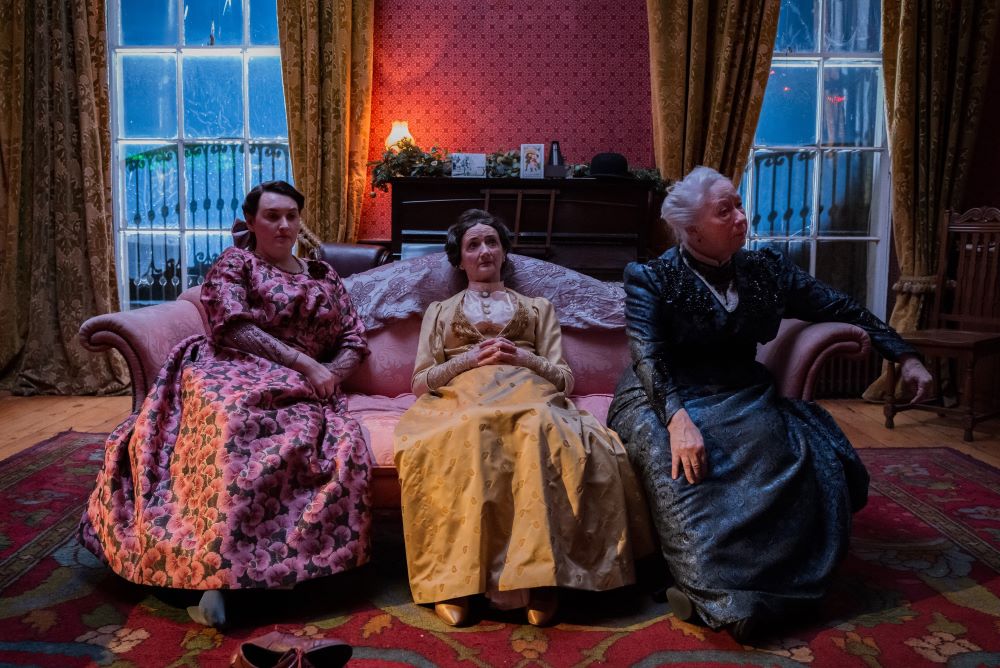 They arrive; we’re escorted to the drawing-room where Mr Browne (Michael Glenn Murphy) is making flesh creep with the climax of that famous monologue “The Green Eye of the Yellow God” (1911, six years after Joyce submitted Dubliners for publication, but my pedantry is irrelevant given the first of several generous and funny bonuses). Mrs Malins (Billy Traynor) is on tenterhooks as to how “screwed” (drunk) her son Freddie (John Cronin) might be when he turns up; it turns out he’s “nearly all right”. Some of us extra “guests” are whirled into a waltz. Joyce's “great deal of confusion and noise” is masterfully handled to make us feel we’re at something that’s really happening – an easy-seeming, hard won spontaneity that works so much better than the nine-voice clamour, for example, in Tony Kushner's The Intelligent Homosexual's Guide to Capitalism and Socialism with a Key to the Scriptures at the Hampstead Theatre (but that was behind a proscenium arch).
They arrive; we’re escorted to the drawing-room where Mr Browne (Michael Glenn Murphy) is making flesh creep with the climax of that famous monologue “The Green Eye of the Yellow God” (1911, six years after Joyce submitted Dubliners for publication, but my pedantry is irrelevant given the first of several generous and funny bonuses). Mrs Malins (Billy Traynor) is on tenterhooks as to how “screwed” (drunk) her son Freddie (John Cronin) might be when he turns up; it turns out he’s “nearly all right”. Some of us extra “guests” are whirled into a waltz. Joyce's “great deal of confusion and noise” is masterfully handled to make us feel we’re at something that’s really happening – an easy-seeming, hard won spontaneity that works so much better than the nine-voice clamour, for example, in Tony Kushner's The Intelligent Homosexual's Guide to Capitalism and Socialism with a Key to the Scriptures at the Hampstead Theatre (but that was behind a proscenium arch).
A quadrille begins. The participants slowly freeze to allow us to hear Molly Ivers’ stinging reproaches to Gabriel for taking the Daily Express’s dirty imperialist penny in writing book reviews, and her calling him a “West Briton” for not getting to know his own country and its language better. Úna Kavanagh as Molly makes a mark as strong as anyone before she abruptly takes her leave with a “Beannacht libh” (“good night”, which is Gabriel’s pointed response). 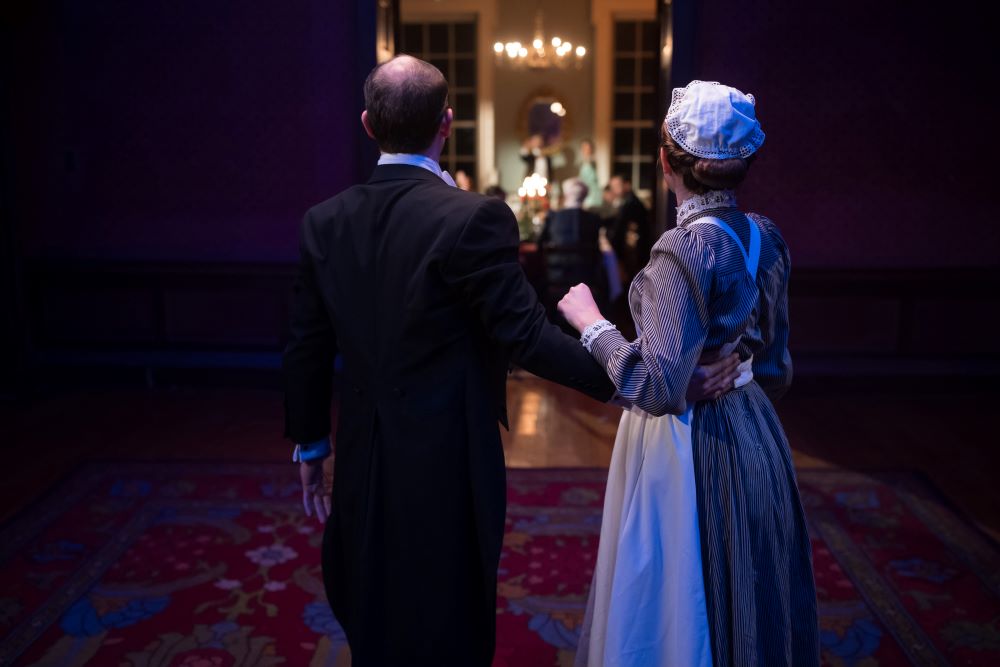 We’re led into the dining room (all installations perfectly designed by Boss, with period-perfect costumes by Joan O'Cleary, and magically lit by Ciarán Bagnall - there's a sure impression of snow outside the drawing-room). Irish theatre legend Mullen’s Aunt Julia seems utterly for real in her delight and welcome; she asks for a seat round the table to be found for “this gentleman with the stick”, so I find myself seated next to Gabriel and Gretta. I even consume half a stick of celery (referenced in the story as “a capital thing for the blood”, and a pudding substitute for the health-conscious Gabriel). Mr Browne evokes the good old days of true Italian opera stars, and someone recommends Caruso as a modern example. Gabriel makes a beautiful speech hailing the “three graces”, his hostesses, praises the unique Irish hospitality (hear, hear, to that), quotes Browning, paves the way for the sense of transience that dominates the later stages of the story as he hymns a more spacious time, and leads us all in a toast with “For they are jolly gay fellows”. The tenor singing a poignant ballad is heard outside; Gretta is perturbed and leaves the room, followed by an anxious Gabriel.
We’re led into the dining room (all installations perfectly designed by Boss, with period-perfect costumes by Joan O'Cleary, and magically lit by Ciarán Bagnall - there's a sure impression of snow outside the drawing-room). Irish theatre legend Mullen’s Aunt Julia seems utterly for real in her delight and welcome; she asks for a seat round the table to be found for “this gentleman with the stick”, so I find myself seated next to Gabriel and Gretta. I even consume half a stick of celery (referenced in the story as “a capital thing for the blood”, and a pudding substitute for the health-conscious Gabriel). Mr Browne evokes the good old days of true Italian opera stars, and someone recommends Caruso as a modern example. Gabriel makes a beautiful speech hailing the “three graces”, his hostesses, praises the unique Irish hospitality (hear, hear, to that), quotes Browning, paves the way for the sense of transience that dominates the later stages of the story as he hymns a more spacious time, and leads us all in a toast with “For they are jolly gay fellows”. The tenor singing a poignant ballad is heard outside; Gretta is perturbed and leaves the room, followed by an anxious Gabriel.
Half the crowd follow them; the lucky rest of us stay at table and are then led back to the drawing-room for joy and tears (the “gentleman with the stick” gets a place on one of the central sofas with the ladies). After the moody Bartell Darcy (Oliver Flitcroft) has broken off Schumann’s “Ich grolle nicht” furiously deprecating his cold, of which he will later give us the full history, we get in close succession Mr Kerrigan (choreographer and performer Matthew Williamson) dazzling us with dance contortions and a bit of magic, Mary Jane silencing the entire room with a mesmerising performance of a traditional song, "May Morning Dew", and Mrs Malins leading us all, with great spirit, in “Just a Song at Twilight”. Finally we’re led away as the “three graces” sit exhausted after the departure of their guests. Admiration and awe for the poignant poise of Ni Chaoimh’s Aunt Kate and Purcell’s Mary Jane, initial girlish excitement shading to thoughtfulness, both every inch the equal of Mullin the magnificent matriarch. 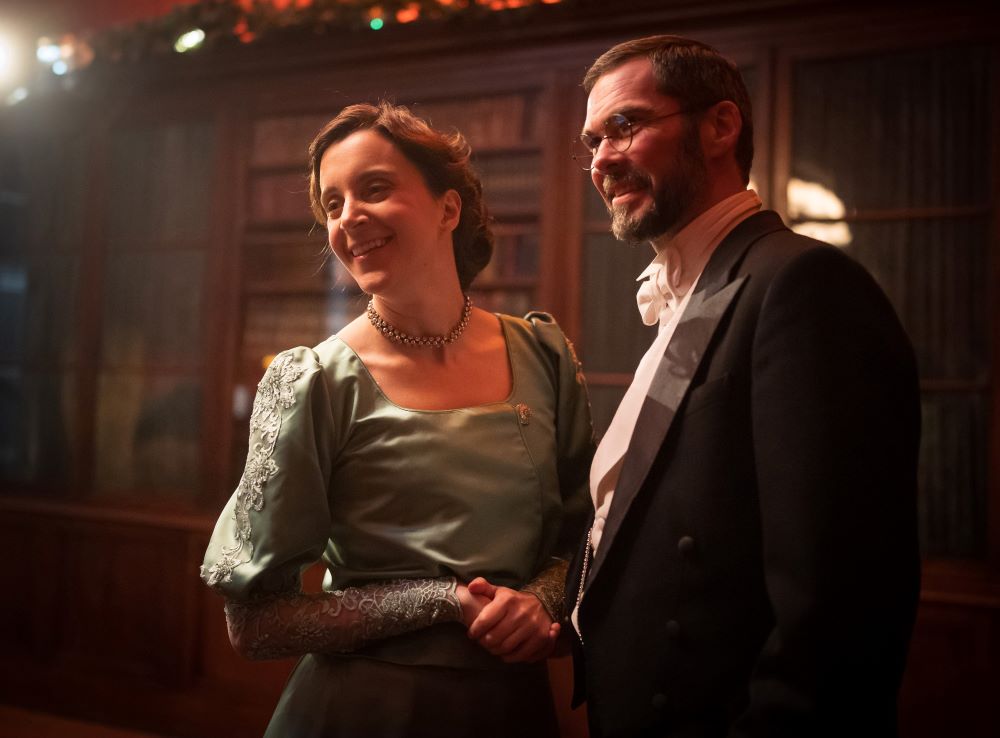 But the deepest is yet to come. We climb what seems like an infinite number of stairs to the bedroom in the Gresham Hotel where Gabriel’s arousal turns to anger and then tender pity as Gretta tells him how the song on the stairs, "The Lass of Aughrime", has brought to the fore the long-ago death of her 17-year-old country love. Again, intense silence from all the spectators seated against the walls as we go deeper into the realms of love and death. Fitzgerald’s Gretta (pictured above with Rea's Gabriel earlier in the evening) breaks our hearts as well as her own, and Rea as Gabriel, head pressed against the bedcover, delivers the famous final lines about snow over Ireland as well as what comes before them with spellbinding introspection.
But the deepest is yet to come. We climb what seems like an infinite number of stairs to the bedroom in the Gresham Hotel where Gabriel’s arousal turns to anger and then tender pity as Gretta tells him how the song on the stairs, "The Lass of Aughrime", has brought to the fore the long-ago death of her 17-year-old country love. Again, intense silence from all the spectators seated against the walls as we go deeper into the realms of love and death. Fitzgerald’s Gretta (pictured above with Rea's Gabriel earlier in the evening) breaks our hearts as well as her own, and Rea as Gabriel, head pressed against the bedcover, delivers the famous final lines about snow over Ireland as well as what comes before them with spellbinding introspection.
Having entered the kingdom of shades in the upstairs room, we quietly leave, learning back where we started that those who ascended first didn’t get the parlour entertainment – hint: turn to the right as you enter the dining room and even if you’re standing, you’ll get the longer version. No regrets, though, from anyone I spoke to: like the film version of Claire Keegan’s Small Things Like These, this is a perfect adaptation of a literary masterpiece. Now to the John Huston film...

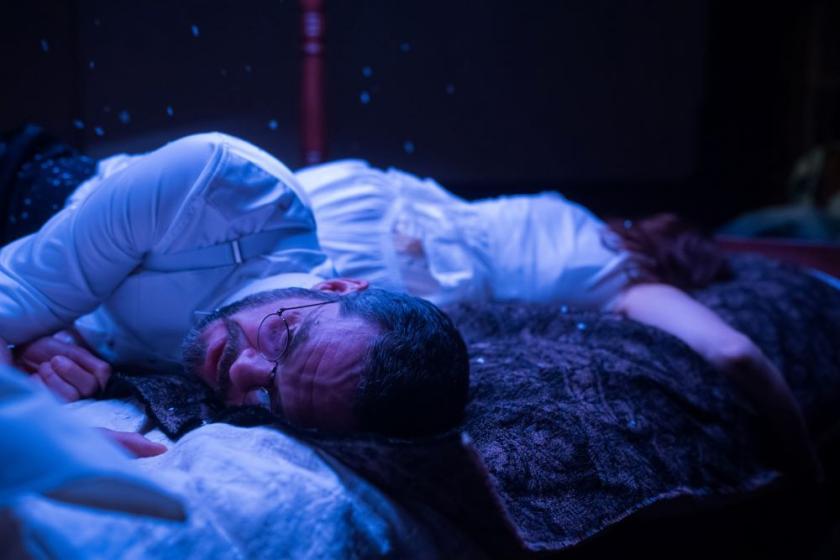


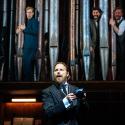
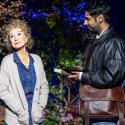
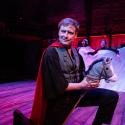

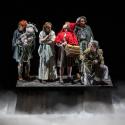
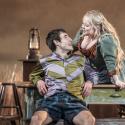
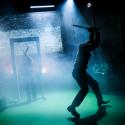
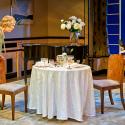
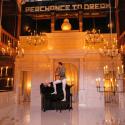
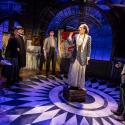
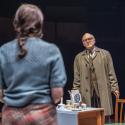
Add comment